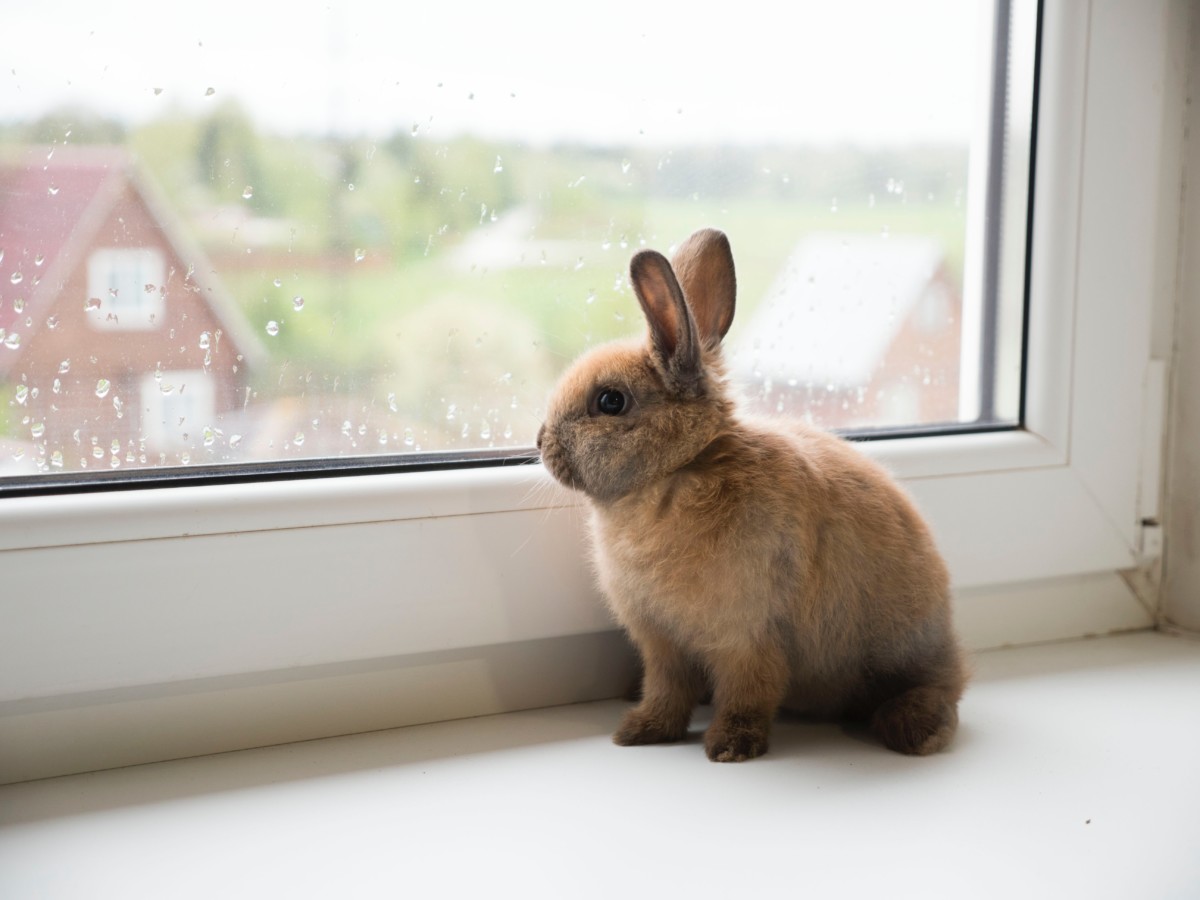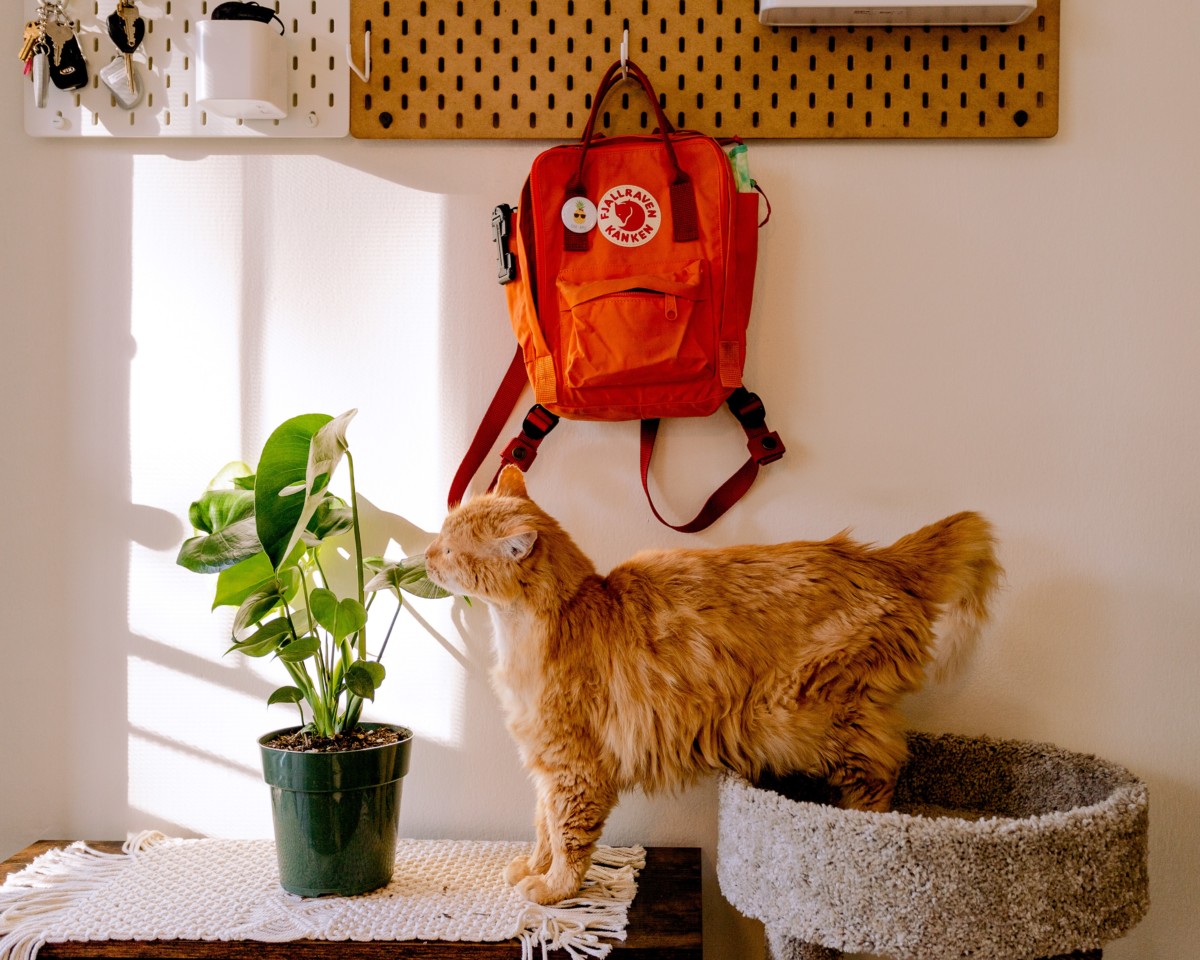Pets are great companions. They provide health benefits like socialization, intellectual stimulation, and companionship while bringing joy to people’s lives. Unfortunately, renting with pets can be difficult; property managers generally view animals as risks and dissuade people from having them through higher rent, deposits, and other restrictions. Thankfully, most rental properties allow pets in limited forms.
Property managers usually permit small pets, like fish or turtles, but are more strict with larger animals, like cats and dogs. So whether you rent a home in Boulder, CO, or Philadelphia, PA, read on to learn what you need to know about renting with pets.

Renting with pets: pet policies
Most rentals have provisions called pet policies. These are rules included in a lease that protect the landlord and tenant by clearly stating expectations around pet ownership. Policies can vary widely, ranging from no-pet policies to having no policy at all. “If you’re planning to welcome a new pet into your rental, there are several things to consider,” says Lisa of Houston PetSet, a nonprofit pet rescue. “You don’t want to adopt a new pet and find out you can’t afford it, or that your rental property doesn’t allow the pet at all.”
Before you sign a rental agreement, carefully review the pet policy and also ensure the policy is included in the lease so that you have it in writing. Here are some common rental pet policies.
No-pet policies
Some rentals don’t allow pets at all. This provision commonly excludes all animals of any kind. Don’t try to sneak a pet in, and “be honest,” states Mick from PAWS, a leading nonprofit animal welfare society. “The landlord will find out if you have a secret pet, or that you have three cats instead of one. If you want to try convincing the landlord, propose a trial period, develop a pet resume, and offer to negotiate an addendum to the rental agreement.” Breaking your lease may result in eviction or fines. Most no-pet policies don’t apply to emotional support animals or service animals.
Types of pets allowed
Pet policies vary widely. Some policies may exclude a single species, such as cats, while others might exclude everything but cats. “Not all landlords advertise that a rental is pet friendly, ” says Trevor, CEO of ApartmentLove, an apartment listing service. “When you find a home that fits your budget and needs, talk to the landlord to show that you and your pet are going to be good and reliable tenants.” Read the provisions carefully and ask plenty of questions to ensure your pet is allowed.
Breed restrictions
Many rentals are picky when it comes to animal breeds, most commonly among dogs. After all, “mixing mutts with small-home living isn’t always easy. Cooped-up pooches can bark up a storm, alienating neighbors,” says Brandie Ahlgren, founder and editor of Seattle-based CityDog Magazine. “However, with some training and exercise, a dog can be a great addition to an apartment.” While not every rental has dog breed restrictions, those that do generally restrict larger and louder mixed breeds and mutts. These are part of the “bully” category and include Pit Bulls, Rottweilers, Huskies, Mastiffs, German Shepherds, and Dobermans.
If you own a restricted dog breed, it’s possible to appeal the restriction and ask for flexibility. If your property manager is steadfast, try negotiating by paying a higher security deposit or a higher pet rent. Bring your dog for a pet interview to prove they are fit to rent, and ask your friends for pet references.
Number of pets allowed
Most rental properties limit the number of pets you can have. You may be limited to one or two pets or may need permission to bring any at all. Service animals and emotional support animals fall outside of this restriction and generally have no limits depending on your area.
Weight requirements
Pet policies commonly include weight maximums – for example, no pets over 100 pounds. These requirements can be sneaky ways of ruling out certain species and breeds without inserting a specific breed restriction. Property managers may also only want smaller animals due to the size of the rental, making renting with pets a more difficult process.
Pet rent and deposit
As if pets aren’t expensive enough, rentals often include pet rent, additional security deposits, and cleaning fees in the lease. Pet rent is an additional monthly cost added to your base rent and is nonrefundable. Pet security deposits are generally refundable but come with strict stipulations. Noise complaints, stains, and damage are all possible reasons your deposit can be voided.
These charges are illegal in some states, so make sure to check with the property manager and do your research before signing a lease. Budget conservatively and ask plenty of questions.
Spaying and neutering
“The most important and least included pet policy is proof that the pet is spayed or neutered,” says Sally of SNYP Spay Neuter Clinic, a non-profit animal welfare organization located in Oregon. “Spaying and neutering has many benefits to the pet, the community, and you. The pet enjoys reduced risk of certain cancers, neighbors in the community are spared unwanted breeding behaviors, and you won’t wake up with a new litter of animals to take care of.”

Renting with pets: service animals
Service animals are working animals and are not considered pets, making them exempt from most rental policies. As such, property managers legally can’t prohibit a service animal from living in a rental. They can’t charge a pet deposit or pet rent, and can’t restrict based on size, species, weight, or breed. You are also not required to disclose any information about your disability or the exact service your service animal provides. Be sure to have proper documentation and a support system who can help you in case of disagreement.
Emotional support animals
Under the Americans with Disabilities Act (ADA), emotional support animals are not considered service animals because they aren’t trained to perform a specific task. Additionally, a doctor’s note does not make an emotional support animal a service animal. However, they are still usually exempt from many rental requirements.
Rules surrounding emotional support animals are typically state or city-dependent. They always require documentation from a medical professional, though. For example, in Seattle, Washington, support animals are given similar rights as service animals. Keep an eye out for local laws regarding emotional support animals.

Considerations for renting with pets
Pets can be great additions to your home, bringing fun, carefree energy to your life. But they come with their challenges – they require cleaning, care, time, and energy and can negatively affect your rental history if they cause damage. They can also limit your renting options; some rentals don’t allow pets or are restrictive with pet breeds, species, and sizes. For example, most rentals do not allow small animals like rabbits or guinea pigs (unless they are considered service or emotional support animals). Regardless, most rental properties allow pets in some capacity, and are willing to help you bring yours along. When you find a rental, here is what to keep in mind to help your pet adjust to their new home.
Pet health
Taking care of your pet’s needs is important. Managing exercise, sickness, and food intake leads to a healthier home. “Whether you’re renting a house or an apartment, it’s important to create play routines to enrich your pet’s life,” says Nou of Valley Animal Center, Fresno’s first humane animal shelter. “Take your dog on regular walks around the neighborhood or to a dog park. For cats, dedicate time for interactive play before a mealtime using enrichment and games.” Here are some important points to keep in mind when renting with a pet:
- Exercise: Ensuring your pet gets enough exercise in an apartment can be a challenge, especially if you live in a small space or don’t have a yard. “Cats love being high up,” says Lauren McCarron, founder of JoyfulPets, a nationwide pet adoption agency. “For cat parents, bringing the outdoor climbing experience indoors is a great way to keep your apartment kitty entertained.” Invest in enrichment items like toys and treats. If you have a dog, make time for walks and for running around at the park.
- Food: It’s always important to consider the food you’re feeding your pet. However, if you live in a small rental and there isn’t much room for exercise, food is especially important. Jenny from Addiction Pet Foods, a New Zealand-made pet food company, recommends feeding your pets a healthy diet to improve their poop health. “When pets are fed premium quality food, their poop is more likely to be firm and mildly odored. This helps keep odor to a minimum and is easier to clean.” Be sure to stay away from foods with processed ingredients and added sugar.
- Vaccines: If you adopt a shelter pet or buy a purebred, they will likely have had their necessary vaccinations. However, always take your pet in for a vet appointment at least once a year to ensure they are up to date. Most property managers ask for proof of vaccinations for your pets.
- Tags and chips: Be sure your pet wears a collar and name tag with your contact information in case your pet escapes your rental. You can also “chip” your pet. This means a tracking microchip is inserted into their shoulder or leg, making them much easier to find if they escape, get lost, or run away.
Cleaning
Pets are messy. In a rental, large messes can increase your risk of losing your security deposit and may require expensive cleaning. Luckily, there are different methods to reduce the risk of messes. “Microfiber cloths are a big plus when dealing with pet hair,” says Tina from Sarina’s Cleaning, a New Jersey cleaning company. “Make sure to order plenty and keep them on hand. If possible, book weekly professional cleanings.” Potty train your pet and purchase cat litter and doggy bags monthly. Here are some other popular tips:
- Litter box: It’s necessary for cat owners to clean this at least once every two days, depending on how many cats you have.
- Small animal cage: Used for rabbits, guinea pigs, birds, and other small animals, this is where they will spend most of their time. Some small animals, like a guinea pig, can’t be potty trained and must be kept in their cage at all times.
- Outside/grass patch: If you have a dog, be sure to keep track of its time spent outside. Take your pet for a long walk before you leave for the day to ensure they don’t have an accident,” says Lauren from McKamey Animal Center, a Tennessee animal welfare organization. “This also helps your pet sleep while you aren’t home.” If outdoor space is limited, consider a small portable grass patch.
- Pet stains: Accidents happen. Younger pets and small animals are at a much greater risk of leaving stains or other marks in your apartment. “Wall stains are the hardest areas that need cleaning,” says Danesh of Galaxy Maids, a New York-based cleaning company. “Try a water-based natural cleaning solution using white vinegar, water, and dish soap to remove scuffs and stains without being abrasive.” Stay on top of stains and act quickly when you see them to ensure they don’t cost you later.
- Pet smell: Pet smells can permeate and may require expensive cleaning or replacement. “Open your windows to help with air circulation,” states Courtney and Jonathan from West Philly Scrub, cleaning services in Philadelphia. “This is an easy way to freshen up the space and clean out built-up odors.” Also, fabric sanitizing spray, odor treatments, and air fresheners can help combat persistent pet smells.
- Floors: Floors get messy when pets are around. “Proper floor care is essential to keeping your apartment clean,” says Wuraola of Sewa & Son Steamers, a Mid-Atlantic cleaning company. “For tile and hardwoods, use regular maintenance with a neutral floor cleaner and mop. This helps get rid of dirt, grime, and scuffs between your less frequent deep cleanings.”
Pro tips: keep cleaning manageable and simple
Cleaning can get overwhelming, so try to split it into manageable chunks. “Sweeping, spot-cleaning, and vacuuming five to fifteen minutes every day can save time later on,” says Mather of HiShine Cleaning Services, a Philadelphia cleaning company. “The longer you let pet hair, dander, and stains sit, the more likely they are to weave into fabrics and cause stubborn stains and smells.”
Marina from Life Maid Easy, a Philadelphia cleaning company, recommends cleaning from the back to the front of your apartment. “To make sure that you have a clean apartment, start in the back of your apartment and work forward. When you get to the front of your apartment, you know that it’s clean. Be sure to use all-natural products; you never know what your dog may lick or your kid may bite.”
Grooming
In order to reduce the risk of messes or health issues, be proactive and groom your pets. In order to reduce the risk of messes or health issues, be proactive and groom your pets. “If your pet sheds short or extremely fine hair that resists vacuuming, it can be tough to clean,” says Peter of Lilly Brush, a pet hair removal product. “The Lilly Brush Mini Pet Hair Detailer is great to safely remove even the most stubbornly embedded pet hair from upholstery, stairs and rugs.”
Brushing your pet helps get rid of mats and excess fur and hair. When cleaning fur, make sure to “invest in a great vacuum cleaner that is designed specifically for removing pet hair,” states Melinda Cooper, owner of Charming Maids, a Charlotte, NC cleaning company. “Be sure it has attachments for upholstery and hard to reach areas such as alongside the baseboards and under furniture.” Clipping your pets’ nails keeps their paws and feet healthy. When possible, bathe your pet. Small animals may need extra mat removal and other frequent cleanings as necessary.
Elderly pets
Take your pet’s age into consideration when looking for rentals. “Each animal is an individual and we as their owners need to make decisions based on their personalities and abilities,” says Stephanie from Wagmor Pets, a California animal shelter. “If you have an older dog, look for first floor apartments so they don’t have to go up and down stairs.” Understand your pet’s needs and make sure the rental can accommodate them.
Pro tips for owners: benefits and risks of allowing pets
An advantage of allowing pets in your rental is that you’ll likely get more competition for your property. Property owners are often wary of renting to people who want to bring pets. That means if you do approve it, you’ll make your home more attractive to a larger population of renters, which can increase your occupation rate, leading to more profit. – the team at Coastal Vacation Properties
An economic way to protect yourself and your rental is to charge more for cleaning. Many pet owners understand that pets carry risks, and are generally willing to pay an extra fee. You shouldn’t have to pay for the additional cleaning charges, so pass it along in the rental price. – the team at Southern Charmed Hospitality Group
Renting with pets: final thoughts
Renting with pets can be a joy. Keep them entertained, active, healthy, and socialized, and they can greatly improve your life. While they cost extra money, require a safe and welcoming environment, and take a lot of work, they can provide many benefits and bring happiness to your life.
Struggling to budget for a rental home? Use the Redfin rental affordability calculator to figure out how much rent you can afford.



























 United States
United States Canada
Canada